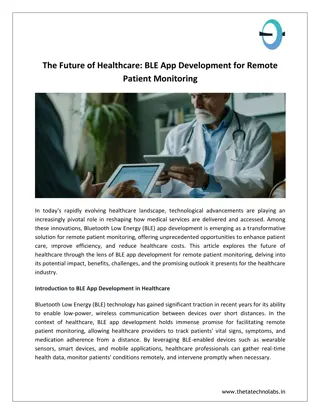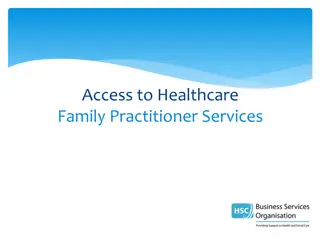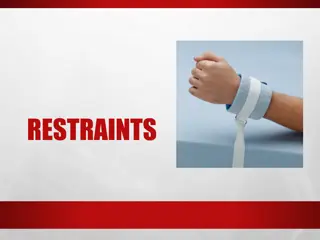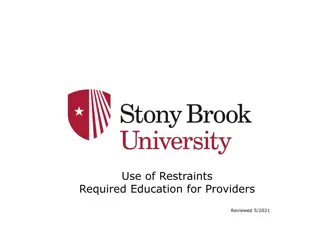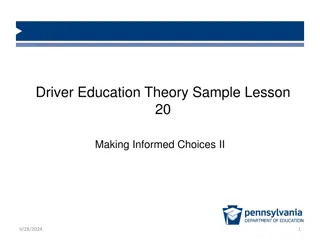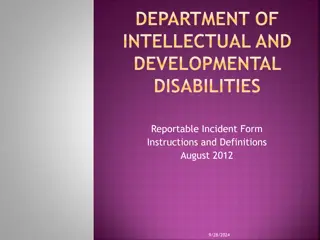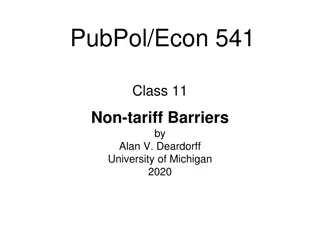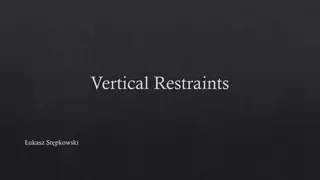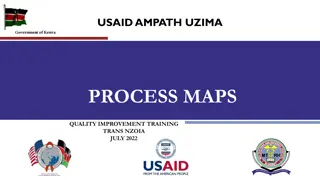Understanding Different Types of Restraints in Healthcare
Restraints play a crucial role in healthcare by restricting residents' freedom of movement, limiting activities, and controlling behavior. This article delves into mechanical/physical, chemical, environmental, and emergency restraints, providing examples and insights into their use. The importance of assessing the need for restraints is highlighted through the involvement of nurses, occupational therapists, and physical therapists in evaluating residents' conditions and behaviors.
Download Presentation

Please find below an Image/Link to download the presentation.
The content on the website is provided AS IS for your information and personal use only. It may not be sold, licensed, or shared on other websites without obtaining consent from the author. Download presentation by click this link. If you encounter any issues during the download, it is possible that the publisher has removed the file from their server.
E N D
Presentation Transcript
Least Restraints
What are restraints? Any measure intended to restrict a resident s freedom of movement, limit activity and/or control behaviour. Can include Mechanical/physical Devices, chemical or environmental
Mechanical/Physical Restraint Restricting an individual s freedom of movement through the use of an external device Examples: Seat belts, straps, bars, ties, posey jacket, mittens, bed side rails, tilt in space wheelchairs, wheelchair trays, merry walkers, wheelchair brakes
THINK.. WHAT ARE EXAMPLES OF MECHANICAL/PHYSICAL RESTRAINTS THAT WE USE???? Bed rails, tilt in space wheelchairs, merry walkers, wheelchair brakes (only applied during transfer and meals)
Chemical Restraint Over use of medications intended to control behaviour, movement or mood Does not include medications prescribed to treat psychiatric disorders
THINK. Do you know which residents who you work with every day that receive Chemical restraints?
Environmental restraint Contain a restricted area and/or cause social isolation Examples: confinement in a locked room, use of electronic devises for wander alerts, restricting leave of absence, restricting modes of transportation, removing ambulatory aides, restricting visitors, locked or alarmed doors
THINK. What kind of environmental restraints do we use? wanderguard bracelets Secured/locked unit
Emergency Restraint Type of physical restraint which is used ONLY when all alternatives to a restraint have been exhausted and the resident is at physical risk of self-harm or of harming others.
Restraint Procedure ASSESSMENT Nurses, OT and PT will assess need of ANY type of restraint Resident s condition and normal behaviours Your information you report about your residents is important
Restraint Procedure Documentation Nurses will document results of assessment Nurses will document type of restraints used (alternatives) Team needs to speak with the family regarding care plan
Restraint Procedure Application of restraints NO restraint(s) are to be used until there is a DRs order and the consent form has been signed by the Family, DR and Nurse If there is NO drs order and/or NO consent then restraints are not to be used Remember-you are allowed to check the resident s chart to see these documents All staff should be aware of why the restraint is being used-if you are unsure you need to ask the nurse The care plan needs to clearly indicate: Type of restraint, and HOURLY CHECKS If either are missing you need to speak to the nurse immediately If you are given verbal directions to apply a restraint-DO NOT APPLY THE RESTRAINT. It must be documented in your care plan IF UNSURE YOU NEED TO ASK IMMEDIATELY-DO NOT ASSUME ANYTHING
Restraint Alternatives There are a number of alternatives that we can use before we get to the point where a restraint needs to be used Can you think of examples of restraint alternatives that we use here??
Restraints used: If you are unsure of how to use any of the above you need to ask your manager or nurse immediately DO NOT USE any of the above if you are unsure, never used before ASK QUESTIONS!!!!
Care Aide Responsibilities RESIDENT SAFETY IS ALWAYS YOUR FIRST PRIORTY Know which of your residents use restraints of any kind Know which residents we are trying restraint alternatives on If you are using restraints-know how to use them If a resident is using restraints you need to do HOURLY CHECKS-that should be documented in your care plan Not leaving residents unattended in any areas ASK QUESTIONS IF YOU DON T KNOW
As review The ONLY restraints currently being used:: Tilt and space wheelchairs Wanderguard Secured unit Resident specific Bed rails (one or both of upper bed rails, used for mobility) Bed height When needed medication
Are there any questions??? If you are ever unsure of your resident, restraints being used please speak to your manager immediately You have the right to question the care plan if you think something is inappropriate or not necessary Remember resident safety is your responsibility






